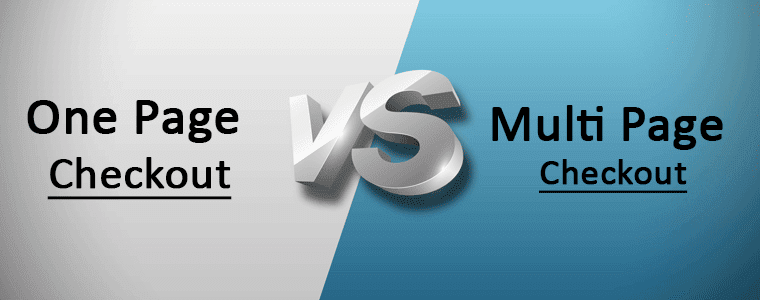Different people tell different stories about their shopping experience. Some would say that it was way too boring and time-consuming while some would tell you that it is the easiest thing for them as they have to face no hassle in the process. It is required for us to learn new methods to gain an easy shopping experience since everything is online for everyone’s convenience.
One of the most important aspects of shopping online that you must pay attention to is the checkout page and how it works. Choosing lengthy checkout options may result in the customers getting disinterested in shopping and can result in abandonment of the cart while the easy options may enhance the traffic.
Hence, it requires perfect and planned steps to gain more buyers and gather some crowd on your website. As the e-commerce business is on the height different websites use different checkout pages and this blog will tell you more about it.
What is One Page Checkout?
This is the method that is opted for by most website owners in order to make it convenient for the customers. It is the page layout in which all the details about your item, the price, the discount, coupons (if applicable), payment options, etc. are available. You can check all the details in one go and can order your product.
This simplified checkout method is used by most website owners in order to enhance the comfort of the customers and they try not to put a lot of questions and steps in front of the buyer. One of the reasons why it is considered to be the most opted because it gives all the information on one screen and you do not have to go back and do some changes if required. You can find Prestashop One Page Checkout addon to be helpful if you are interested in it.
Now, apart from the One Page Checkout, another method that is used by the website owners is the MultiPage Checkout. As the name suggests, it has multiple pages for multiple information about your shopping.
One page might be of your item and the amount, another page might ask about your address, then comes the shipping details, and then you may reach on the payment page. Hence, there are multiple pages for different functions.
One Page Checkout Vs Multi Page Checkout:
1. The difference in the utilisation of time –
Prestashop Fast Checkout addon provides the buyers to have less time while they are shopping and want to do the payment. They can see all the details in one place and it will be helpful for them without any complications. Website owners may check PrestaShop Quick Checkout addon if they do not want to go for MultiPage Checkout.
2. The appearance and the organization of information –
All the information on the website seems more organized when you go for Prestashop One Page Checkout. Buyers do not have to jumble between the pages in order to find more information as it happens in the MultiPage Checkout. Hence, you can check the PrestaShop Simplified Checkout addon if you want your buyers to feel comfortable.
3. When comes to correcting information –
The debate around One Page Checkout vs Multi Page Checkout is never-ending. Buyers find it a difficult task to search for the pages once they have to do some changes to the website supporting multiPage Checkout. PrestaShop One Page Supercheckout can help you to enhance the traffic by simplifying the shopping experience for all the customers once they have to see all the details in one place.
4. Quick Checkout –
Customers usually want simple steps to complete their shopping and it is easier with PrestaShop One Step Checkout Addon. There is no problem with clearing various steps for the buyers to confirm their product and hence, you must get PrestaShop Responsive One Step Checkout addon for enhancing the number of buyers.
Hence, now that you know the benefits of OnePage Checkout, you can try the Prestashop Fast Checkout addon to enhance your business.
Buy PrestaShop One Page Checkout addon from Addon store
Also Read:





